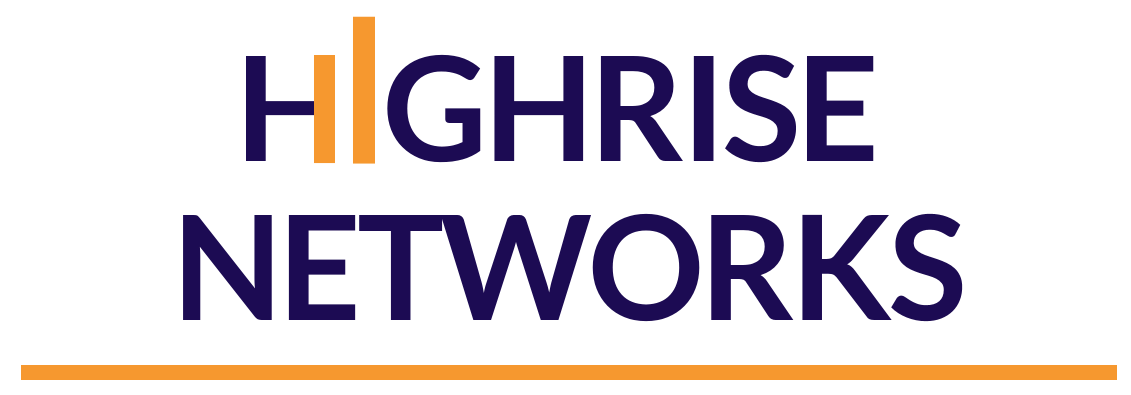Looking at the Top 3 Challenges Facing Businesses in 2022
by: Courtney Van De Burg
With the start of each new year, you face a new set of opportunities and establish goals for the upcoming months. In addition to opportunities though, it is also important to watch the market trends in your industry, understand the key challenges expected, and brainstorm solutions that will help you overcome these challenges.
Businesses across all industries have experienced significant, rapid changes in both the market and internal workplace environments because of COVID-19. Agility and adaptation have become the name of the game and it’s more important than ever to stay on top of market trends, pay attention to industry leaders, and keep watch on your competitors.
At Highrise Networks, we have identified the top three challenges facing businesses in 2022 and discuss how some businesses are working to overcome these challenges:
- Economic Concerns
- Attracting and Retaining Talent
- Keeping Up with Digital Technologies
Economic Concerns
Since the start of the pandemic, every industry has been impacted by the effects of COVID-19. Those that have made it through have done so by rethinking their strategies and adapting to the new “norms.” We are optimistic for the growth potential in 2022, but we aren’t through the pandemic yet. It continues to cause challenges, most notably inflation and supply chain shortages, as well as other market conditions that constrain growth. With spikes in the Omicron variant and other variants expected, additional outbreaks and shutdowns remain a concern. High prices, supply shortages, long lead times, and late deliveries are also expected to continue. These issues are compounded by the challenges of keeping up with government compliance, safety protocols and regulations, but without the government support seen in 2021.
To combat some of these challenges, businesses need to be proactive in identifying and developing creative problem-solving solutions, including:
- Rethinking their supply chains and expanding their global network
- Taking lead times and product shortages into account during planning processes
- Relying more on safety stocks
- Re-evaluating operations to identify existing gaps
It is also increasingly important to develop excellent relationships with suppliers, maintain clear and open channels of communication, and manage customer expectations.
Attracting and Retaining Talent
In addition to the “Great Resignation” of 2020-2021, HR departments across multiple industries are seeing a rise in stress levels and burn-out. This has led to an increase in employee turnover, which impacts company culture and productivity levels, not to mention companies’ bottom line. Many employees are taking this time to rethink their personal and career goals as they seek out new opportunities or more stable industries, look for jobs that offer better work-life balance, or in some cases, not even return to the workforce. According to reports from the Bureau of Labor Statistics, the number of job openings is drastically outpacing current unemployment numbers. That’s making it more difficult than ever to attract and retain qualified talent that meets a company’s changing business needs and strategies.
The shutdowns created by the pandemic caused a sharp increase in remote operations and the need for businesses to adapt and many of those adaptations are here to stay. Employees are now looking for great flexibility in their jobs, particularly in the continuation of remote and hybrid work opportunities. Businesses that want to retain their employees and achieve growth this year will need to:
- Consider upskilling or reskilling current employees to meet their changing needs
- Provide incentives that appeal to the current talent pool (which may include higher pay, better benefits, fringe benefits, remote capabilities, etc.)
- Be more cognizant of employee wellness and mental health
- Create working environments that promote better work-life balance
Working on strategies to increase job satisfaction can not only help you retain employees and reduce turnover, but it can increase productivity, raise company morale, and lead to better customer service. In addition, upskilling your employees helps you expand their capabilities to meet your needs, while engaging them to develop their talents and face new challenges.
Keeping Up With Digital Technologies
From remote workers to operational adaptations, the pandemic brought on rapid changes that truncated many businesses’ long-term digital plans into just a few months. We’ve seen an increase in ecommerce and digital sales, a greater need for mobile apps and QR codes, a surge in online meeting platforms like Zoom and GoToMeeting, and new developments in software engineering. Businesses need to look at the changes that have been made and what will be required going forward to continue their digital transformations.
Considerations will need to be made to keep up with the latest technologies, including:
- Upgrading IT infrastructures to meet greater digital demands
- Maintaining connectivity between team members across multiple locations,
- Automating manual processes that create bottlenecks in operations
- Managing digital expectations of consumers
As we move more toward digital operations, it also opens the door for increasingly sophisticated cyber-attacks. Businesses will need to invest in IT and software solutions to meet these needs and keep the devices of their remote workers secure.
EXPLORE MEMBERSHIP
Mastermind groups can help you work through complex business issues. Join today!
